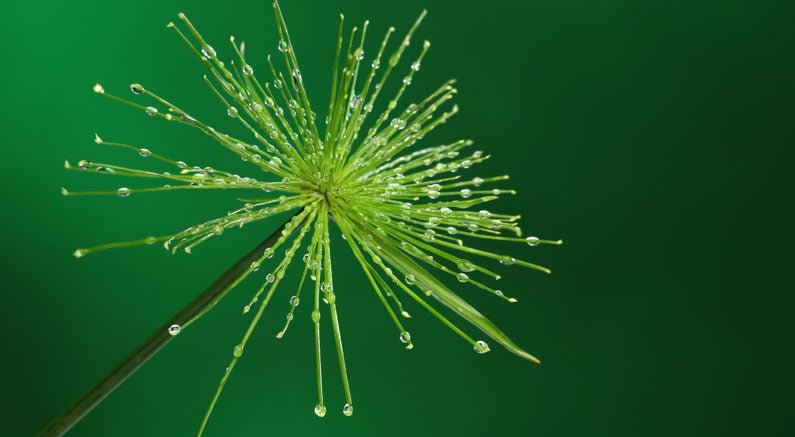If you have trouble with water runoff damaging your garden, or you just want to do your part to protect your local rivers, then you'll want to explore creating a rain garden.
Rain gardens are a beautiful and practical way to control storm water runoff. They are simply a garden planted in a depression at the base of a slope that collects and holds rainwater, allowing it to slowly seep into the ground, rather than flow into roads and waterways. These are not ponds or even swampy areas. In fact, a well-made rain garden is designed to drain excess water in less than two days (which is good news if mosquitoes are a problem).
They are so effective, and so beneficial for stormwater management and improving water quality, that some homes can earn tax breaks for creating one.
Benefits of Rain Gardens
The primary benefit is its ability to control urban runoff , especially during major rain storms. Urban runoff comes from our roofs, driveways, lawns, sidewalks and roads, and is full of pollutants like pet waste, fertilizers and pesticides.
Left unchecked, this urban runoff can contribute to damaging flash floods and polluted watersheds. Build a rain garden to slow the polluted water from reaching storm sewers.
Officially known as “bioretention areas,” these were first introduced to developments in the 1990s in an effort to save money on water runoff treatments. Studies on these early rain gardens showed an impressive 75–80% reduction in stormwater runoff during an average rain storm.
Here are some other amazing benefits:
- They prevent erosion. Water runoff is caught and absorbed before it has a chance to cause damage.
- They are beautiful. Full of sedges, grasses and flowers, rain gardens have a lovely cottage garden appearance.
- They save money. They cost a fraction of the cost of a typical lawn to plant and require very little water.
- They’re easy to landscape. Low-maintenance by design, you'llprimarily using tough, native plants that can handle both dry and wet periods.
- They protect your home. Rain gardens collect excess rain water away from your home, preventing issues like wet basements, mosquito-breeding puddles and foundation issues.
- They support wildlife. Birds, insects and even amphibians can call a rain garden home.
One of the greatest things about rain gardens is how easy they are to create and landscape. In fact, Mother Nature does most of the work for you.
Elements of a Rain Garden
- Swale or piping, to guide water runoff
- A slope down to the rain garden - a 2% grade is ideal
- Decorative stones and boulders
- Berm to hold the runoff
- Deep rooted plants, ideally suited to a rain garden environment
Where to Put a Rain Garden
In order to capture the most runoff, it needs to be strategically placed. When scouting for the perfect place, look for a natural depression, or low-lying area of your property where stormwater flows and pools. Just make sure you place it well away from your house; more than 10 feet away is ideal.
No matter what, do not put your rain garden over a septic tank or utility lines, and always call 811 before you start digging.
Plant Selection
Rain Garden Planting Zones
The best plants for rain gardens actually vary depending on where you plant them. Every rain garden has three planting zones:
- Center - where water pools and soaks into the soil. Water-loving plants that can handle soggy soil do best here.
- Slopes/sides - a little drier, but still susceptible to pooling water. Versatile plants that can take both dry and soggy soil will thrive here.
- Top - the driest area, that needs deep-rooted drought tolerant plants to hold together and keep the berm in place.
It's best to plant plugs or small plants, not from seed, which easily washes away.
Here is a list to get you started. Remember, check your local USDA growing zones, as well as your average annual rainfall. Some plants suggested for slopes in a wetter climate, for example, may do better in the center for drier climates.
Best Plants for Center
Best Plants for Slopes
Best Plants for Top
Rain gardens are a truly win-win landscaping project that benefit everyone, from the homeowner, to the community at large. Incorporate one into your own garden and enjoy the many benefits.
Happy Gardening!

